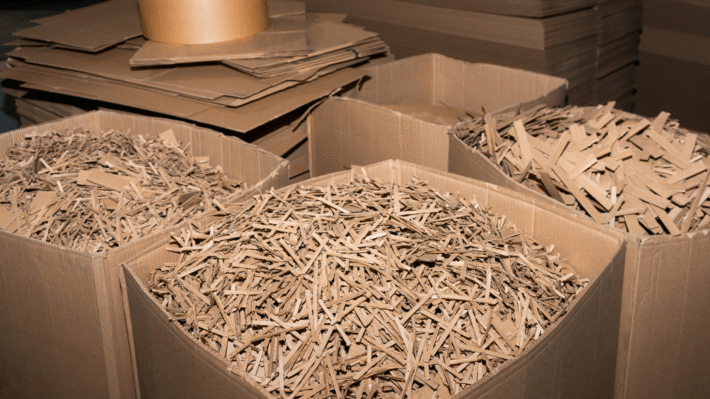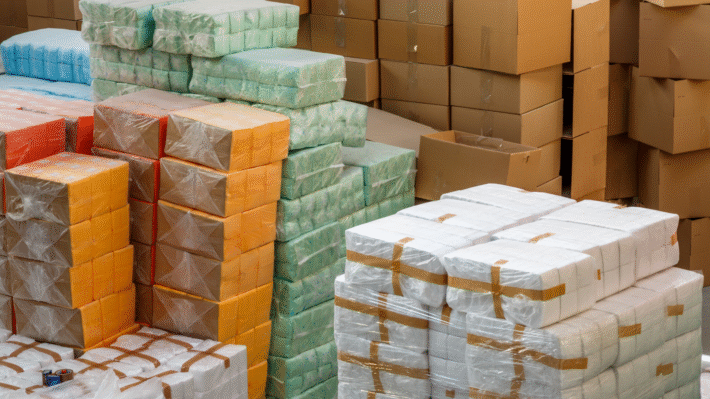Establishing Circularity in Agricultural Equipment by Mastering the Take-Back Strategy

Howdy! Ever thought about the heaps of waste generated through our agricultural equipment? Take a moment to visualize how immensely we could turn things around if we adopted a circular approach in the equipment supply chain. Say bye to waste, pollution, and resource depletion, and hello to extended lifecycles and waste minimization! This article digs into the idea of creating circularity in agricultural equipment supply chain through take-back programs for tractors and harvesters. We’ll explore everything from circularity principles and challenges, to the roles of various stakeholders like manufacturers, dealers, farmers, government and NGOs. So, buckle up, y’all! We’re bound for a ride towards optimizing our agricultural practices, and leaving behind a cleaner, greener planet — all thanks to circularity in equipment life cycles!
Understanding Circularity in Agricultural Equipment
Our trusty tractors and hardworking harvesters don’t last forever. Tossed aside when they’ve given everything they got, these once mighty machines pose big challenges to our environment and resources. Thing is, challenges are just opportunities in disguise. And with a little bit of circular thinking, we can turn these old, tired machines into something truly worth talking about.
Challenges of Linear Supply Chains
Waste and Pollution Issues
By now, we all know that waste ain’t great. It’s not just the sight of broken-down machines, rusting away in forgotten fields. No, it’s bigger than that. Every tractor that’s scrapped, every harvester dumped, that’s a whole heap of valuable stuff going to waste. And let’s not even start on the pollution grumbling from those old, inefficient engines.
Resource Depletion Warning
Mother Nature ain’t a bottomless pit. Every bit of steel, every dash of oil, every speck of metal we whip up to build these machines… it all comes from somewhere. And sometimes, that somewhere starts to run dry. We’re draining our world dry, day after day, machine after machine. Unless we find a fresh way of thinking, we’ll leave nothing behind but dust and rust.
Shortened Lifespans of Machines
Machines, like people, wear out. Parts wear down, systems fail, and before you know it, your once trusty tractor is nothing more than a heap of old parts. It’s not the machine’s fault. It’s just not made to last. But what if it was? What if we could make machines that go on and on and on… wouldn’t that be something?
Circularity Principles
Designing for Reuse and Durability
Circular design. Now, there’s a term that tickles the brain. Imagine, if you will, a tractor that’s built not just for today but for tomorrow. Constructed to be taken apart as easily as it’s put together. Designed to last not years, but decades. Where every part has a purpose, and no part goes to waste. This isn’t some far-out dream. This is circular design.
Understanding Closed-Loop Systems
Life is a cycle. Nature is a cycle. So, then, why not machines? That is the question at the heart of a closed-loop system. It’s a trade-in of your old tractor, upcycling it into a shiny, new model. It’s a world where waste is something that happens to other people. And it’s a system that reduces costs, saves resources, and keeps our fields working, generation after generation. That’s the power of circular thinking. That’s the future of farming.
Take-Back Programs for Tractors and Harvesters
Machines, like tractors and harvesters, are the unspoken workhorses of the agricultural sector. They break the earth, sow seeds, and collect the fruits of farmer’s hard work. They are often treated with the gravitational respect they deserve but the moment they outlive their usefulness or break down, we mostly abandon them. In line with today’s requisites for sustainability, Take-back programs allow us to extend their utility and keep their components out of landfills.
Types of Equipment Covered
Inclusion of Tractors and Harvesters
This initiative includes but is not limited to tractors and harvesters, with options available to expand the program. Tractors, the omnipresent symbol of farming, and harvesters, the saviors of the harvest season, can indeed be given a second lease of life through these programs. The inclusion of these machines will drastically reduce waste, pollution, and most importantly, resource depletion.
Role of Implements and Components
Beyond the bulky machinery, it is the little cogs that play a significant role in promoting circularity. Implements and components like batteries, tires, or small parts routinely discarded are now returned to be refurbished, reused, or recycled. By taking back these stray parts we can greatly enhance their lifecycles, further promoting the philosophy of waste minimization.
Models of Take-Back Programs
Trade-In Programs
The first model to consider is Trade-in programs. It’s simple: bring your old tractor or harvester, get a discount on a new or refurbished one. It aligns financial incentive with environmentally conscious behavior, a classic trick to prompt change.
Leasing and End-of-Life Returns
The second model, aimed at those who prefer renting their fleet is Leasing and end-of-life returns. Here, farmers lease equipment from manufacturers or leasing firms, with a clause for returning the equipment once it has reached its shelf-life or at the end of the lease term.
Subscription-Based Ownership
Lastly, a creative solution for the millennial farmer is Subscription-based ownership. This Netflix-for-tractors model lets you use equipment and services for a recurring fee. At the end of product lifespan, the machinery is returned to the manufacturer for refurbishment, remanufacturing, or recycling.
Ultimately, take-back programs present a formidable solution to our waste problem, transforming the linear, consumptive pattern of the agriculture industry towards a circular, regenerative cycle. We ‘re on the cusp of a paradigm shift where every farmer has an opportunity to be an environmental hero. Farmers of the world, it’s time to bring that old tractor back home.
Stakeholders in the Supply Chain
Every successful program relies on key stakeholders. Let’s spill the beans on who is who in our grand plan of creating a circular agricultural equipment supply chain. Beware, we’ve got a full cast—from manufacturers, dealers, farmers to government bodies and NGOs.
Role of Manufacturers
Making the circular supply chain roll smooth needs the big shots- the manufacturers, to step on the gas.
Recycling and Collection Infrastructure
The big cheese of the manufacturing world have a tall order. They are called upon to develop a recycling and collection infrastructure that’s as reliable as their equipment. No piece of equipment, no matter how tiny, should slip through the cracks. That’s part of the plan. It cuts down the waste, slims down the pollution and fattens our hopes for a sustainable future.
Offering Incentives for Participation
What can sweeten the deal for everyone involved, you ask? Incentives! Manufacturers can rope in dealers and farmers on board by sprinkling some incentives. A great bait to pull everyone towards the big goal, huh?
Involvement of Dealers
But you know what? Manufacturers can’t do all the heavy lifting. They need strong support. That’s where dealers enter.
Managing Trade-Ins and Logistics
Dealers are the local heroes who wear many hats. They manage trade-ins, arrange collection points, and take care of all that logistical hoopla that goes into getting the old tractors and harvesters back to the factories.
Educating Farmers and Promotions
Dealers sure are a busy lot. They also spread the word to the farmers – our hardworking heroes responsible for our food. They educate them about the benefits of take-back programs and show off the shiny refurbished machines as part of their promotion.
Engagement of Farmers
Speaking of farmers, they play a major character in our circularity story.
Participating and Responsible Disposal
Our food growers got a big job. They have to participate earnestly and ensure responsible disposal of their old machines. Not just that, they must provide feedback about their refurbished machines. Now, that’s a great sequel to our tale.
Benefits of Refurbished Options
And it isn’t all just work and no play for them! Farmers get a good deal out of it too. The refurbished machines are cost-friendly and earth-friendly. Now, that’s what I call reaping the bounty!
Government and NGO Support
Government bodies and NGOs add weight to the cause. They’re like the cherry on top.
Providing Regulatory Support and Funding
The government gives a boost to the cause by providing regulatory support and funding. They help in making things easier and more effective.
Running Awareness Campaigns
NGOs and government bodies jump in with awareness campaigns. They tell the world about the seismic changes happening in the agricultural equipment supply chain. Together, all these stakeholders change a simple tale into a blockbuster saga of circular economy. Stick around, because the best part is yet to come.
Utilizing Technology and Innovation
As we wade into the depths of the 21st century, technology and innovation have become a magic wand, casting spells that transform the world as we know it. In the realm of agricultural equipment circularity too, technology is the enabler, the catalyst, bringing about profound changes. Let’s dig a little deeper and see how it’s doing it!
Internet of Things (IoT) and Telematics
In this revolution, the Internet of Things (IoT) and telematics are at the forefront. They bring in an era of connectedness, weaving a network among the machines, data and people. But how does this benefit our quest for circularity?
Predictive Maintenance and Analytics
Here’s the wonderful part – IoT and telematics, twinned with predictive maintenance and analytics, let us preempt problems. They give us a heads up on maintenance needs before breakdowns occur. This means fewer surprises, lower downtime and yes, extended lifespan for these hardworking machines. It’s adding a layer of sustainability to the scenario, reducing the pressure on resources and leading us towards circularity.
Enhanced Traceability through Blockchain
But the wonders of technology don’t end there. Welcome blockchain, an innovative tool bringing in enhanced traceability. With a transparent, tamper-proof ledger system, it tracks equipment parts, their origin, their journey. It ensures rightful disposal or reuse, breathing life into the concept of a traceable, secure and accountable supply chain.
Digital Tools and Smart Technologies
While we’re talking tech, let’s not forget the other superheroes – digital tools and smart technologies – that are slowly yet steadily creating waves.
Lifecycle Management Solutions
Embracing digital lifecycle management solutions can be a game-changer. Why, you ask? They bring all information under one virtual roof, aiding decision-making. They let us track and manage equipment lifecycles. They enable resource planning, allowing us to extract the most from each part, each machine, thereby nudging us closer to circularity.
Benefits of AI and Predictive Analytics
And finally, let’s tip our hats to the one tool that’s been creating quite a buzz – Artificial Intelligence (AI). AI and predictive analytics help us make sense of massive data. They whisper insights into our ears, helping us optimise operations, predicting part failures, eventually ensuring a smoother, more efficient path towards achieving circularity.
In essence, technology and innovation are the secret sauce, adding flavor to our journey of creating circularity in the agricultural equipment supply chain. With these tools by our side, a more sustainable, less resource-hungry future awaits us!
Economic and Regulatory Impact
Creating circularity in the agricultural equipment supply chain has a dramatic economic and regulatory impact. It’s about more than just saving the environment, it’s also about making a significant shift in the industry’s financial outlook.
Economic Benefits to Stakeholders
Let’s take a closer look at the economic boons that can come from adopting take-back programs for tractors and harvesters.
Cost Savings and Revenue Streams
One of the most significant benefits of any circular system is its potential for cost savings. When tractors and harvesters are reused, refurbished, and recycled, costs can be significantly reduced. Equipment that once would have been dumped into a landfill can now return value.
For farmers, this can mean spending less money on newer industrial equipment. But the benefits aren’t just for the end-users. Manufacturers, too, can save resources, time, and energy by reusing parts or entire chunks of machines in the construction of new equipment. Moreover, the remanufacturing of used equipment can open up new revenue streams, reaching new markets and customers.
Job Creation and Brand Loyalty
Another often overlooked economic benefit of circularity is job creation. A closed-loop system requires more labor—people are needed to collect, sort, refurbish, sell, and manage the machines. This creates new job opportunities in a multitude of fields.
Moreover, organizations that adopt these circular practices tend to win customer loyalty. It’s a way of demonstrating corporate responsibility, showing that the company cares about more than just profit margins. Customers are increasingly likely to choose brands that align with their values, and environmental sustainability is high on the list for many.
Regulatory Frameworks and Standards
Of course, navigating the path to a circular agricultural supply chain isn’t just about capitalizing on economic opportunities. It’s also about understanding and working within existing regulatory frameworks and industry standards.
Understanding Government Incentives
Various governments, both local and national, have created incentives to encourage the adoption of more sustainable practices. These can come in the form of grant programs, tax breaks, or additional funding. Keeping a keen eye on these incentives can make the shift towards circularity not just viable but exceptionally profitable.
Industry Standards and Compliance
Lastly, let’s not forget the role of industry standards and compliance measures. They act as a roadmap and provides the necessary guidelines for the implementation of circularity in agricultural equipment.
Meeting these established standards can enhance the brand’s reputation in the marketplace, reduce the risk of legal complications, and potentially, open up opportunities for partnerships and collaborations with other like-minded companies in the supply chain.
Transitioning to a circular equipment supply chain isn’t just environmentally responsible. It’s also an economic opportunity, a chance to redefine industry norms, and to fish in untapped customer bases. With a greater understanding of the potential economic benefits and the regulatory landscape, we can sustainably and profitably bring this vision to life.
Future Directions and Expansions
To create sustainability in the agricultural equipment industry, we need to think beyond the present. What’s on the horizon for the circular economy? How will our current efforts mature and expand?
Expanding Beyond Current Equipment
Right now, our focus is on tractors and harvesters. These machines play a vital role in modern agriculture, but they are not the only tools in a farmer’s equipment shed. To ensure that this initiative leaves no stone unturned, we must extend our circularity efforts to a wider array of agricultural equipment.
Integrating Precision Agriculture
The future of farming lies in precision agriculture. This farming management concept uses technology to monitor, measure, and optimize crop growing conditions. It maximizes resource use efficiency, improving sustainability and profits.
Take-back programs must keep pace with this trend. Our efforts can’t stop at recycling old tractors; we need to ensure the GPS systems, drones, and other precision agriculture tools are also captured within the circular economy.
Sharing and Global Equipment Hubs
Farmers worldwide face similar challenges. Wasted resources, pollution, and shortened equipment lifespans aren’t limited to one country or region. Establishing global equipment hubs presents an opportunity to share knowledge, resources, and solutions for these universal problems.
Long-Term Industry Collaboration
Cooperation will be the key to the circular economy’s success. Manufacturers, dealers, farmers, and government organizations must align their efforts to tackle the agricultural industry’s waste issues effectively.
Knowledge Sharing and Certifications
One way to encourage collaboration is through knowledge sharing. Farmers learn best from other farmers, so fostering an environment that enables this interaction could be incredibly beneficial. This could also be facilitated through circular economy certifications — a badge of honor for those embracing the circularity principles.
Promoting a Circular Economy
The agricultural industry can be a pillar in promoting the overall circular economy. By encouraging responsible equipment disposal, refurbishing machines, and closing the production loop, we will not only create sustainable farming practices but will also inspire other industries to take up the cause.
In conclusion, the future is promising for circularity in the agricultural equipment supply chain. With evolving technology, global collaboration, and an expanding focus, this project should inspire not only the farming community, but also other sectors to rethink their approaches to waste and resource utilization.



